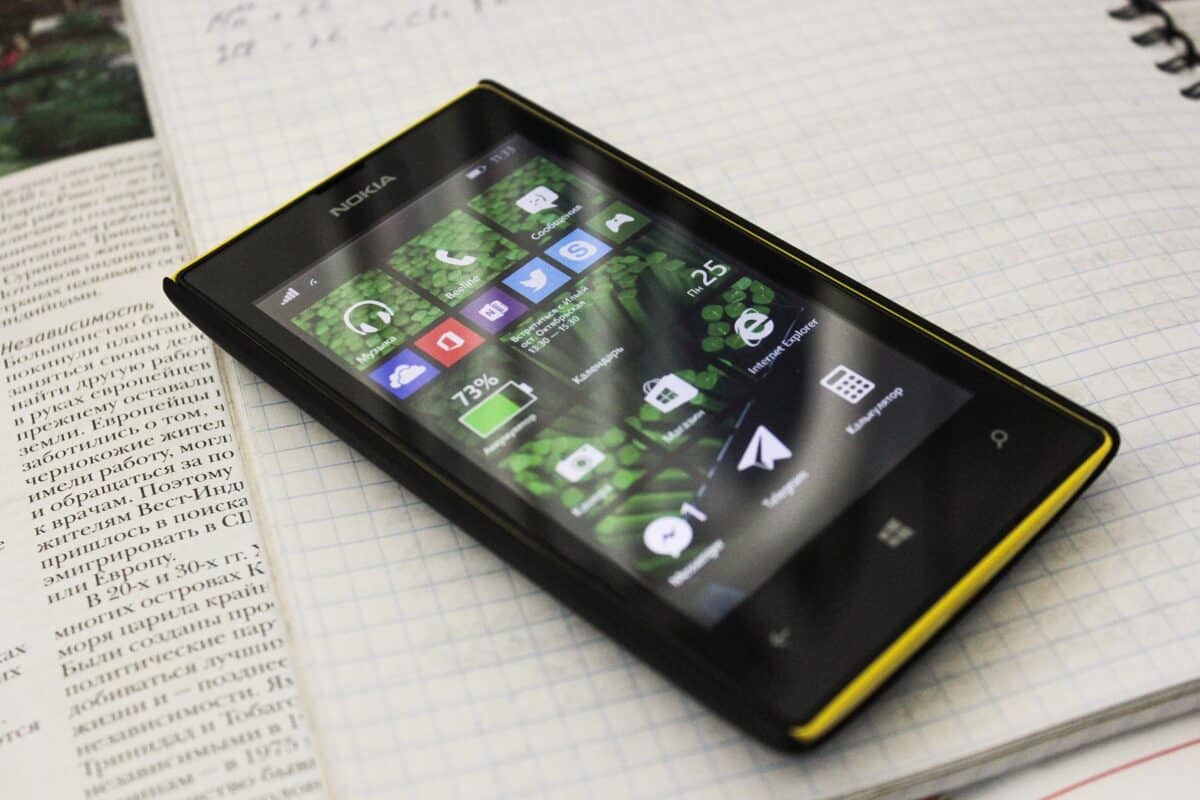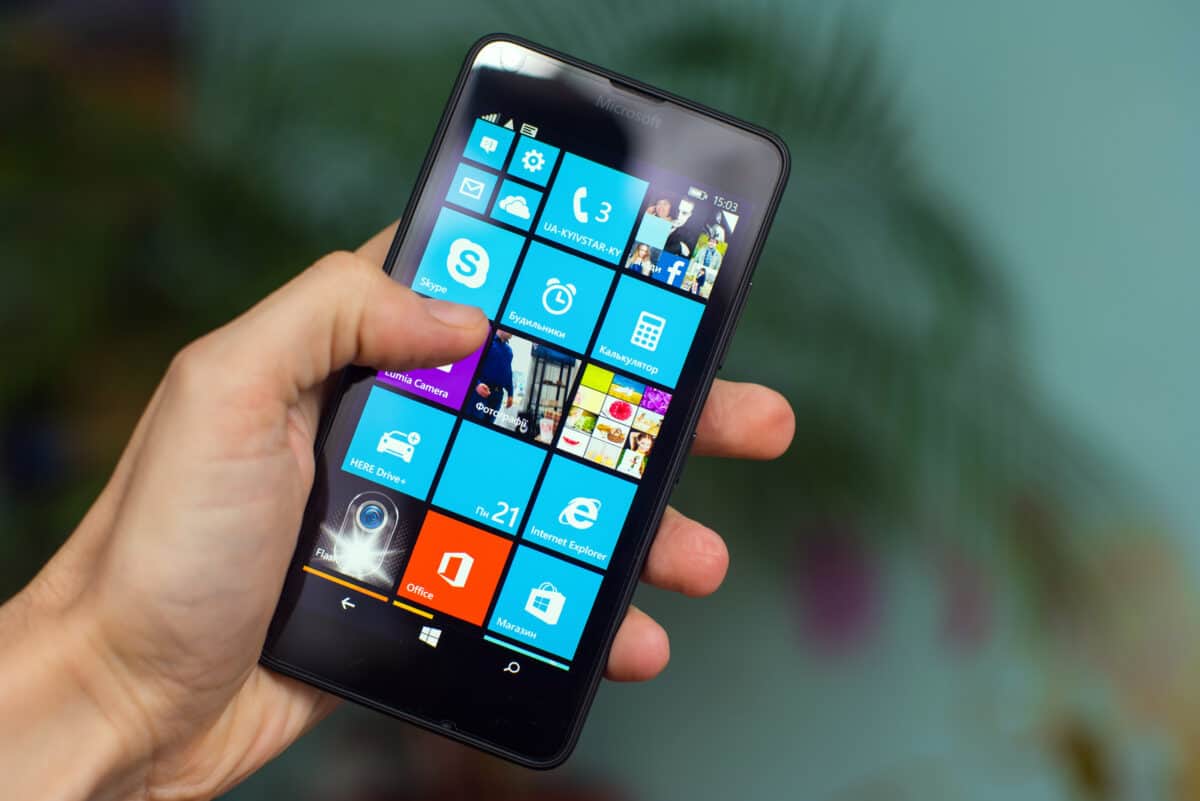5 Facts About The Windows Phone
While Windows Phones are dead in the water by now, there’s no reason not to look back at the timeline of the Windows Phone. Perhaps doing so will grant some other insights into why the platform was a resounding failure.
- 2022 is the last year that Microsoft will support Windows Phones.
- Windows Phones were based on the Metro design language.
- Windows Phones were programmed in C and C++.
- They were intended to succeed Windows Mobile and Zune.
- Microsoft officially discontinued the Windows Phone in December 2019.
Windows Phones were like lightning bolts. They flashed for a second and were gone just as fast. While Microsoft continued to support the phones in the hope of them taking off, there hasn’t been much on the front of Windows Phones recently. The platform’s demise was a hot topic among those who didn’t like Microsoft.
If you were wondering what happened to these quirky gadgets and why Terry Myerson opened up on LinkedIn in a heartfelt farewell message during his exit from Microsoft’s Windows Device team. He boiled down the failure of the Windows Phone to two main factors.
Firstly, early Windows Phones were innovated from an incomplete version of Windows CE, leaving less room for innovation and hampered the phones’ launch by making them feel dated. The industry also moved faster than Microsoft could keep up.
Secondly, the mobile industry moved faster than Microsoft anticipated, and their teams couldn’t keep up with Android and iOS’s mobile platform innovations while allocating appropriate resources to their standalone projects.
While he noted several reasons behind the mobile platform’s demise, these were the primary reasons he gave for the imminent failure of the Windows Phone.

©By Enterely – Own work, CC BY-SA 4.0, https://commons.wikimedia.org/w/index.php?curid=34932830 – Original / License
Timeline of the Failure of the Windows Phone
The Windows Phone first debuted in October 2010. These phones were intended to succeed the Windows Mobile and Zune lines, combining the two into one cohesive product similar to the iPhone.
The first Windows Phone was released with the Windows Phone 7 operating system, based on the Metro design language and designed using Windows CE. The phones received an initial boost from the “new phone smell” crowd, who quickly found that the phones were lacking functionality that they would have gotten from another mobile operating system.
The Windows Phone was a resounding flop. Engineers behind the production of the platform attribute its failure to the speed with which the platform was developed and the fact that it was based on an incomplete version of Windows CE. In addition, many Windows Mobile applications were not compatible with the Windows Phone operating system, despite the Windows Phone’s intent as a successor to Windows Mobile.
Larry Lieberman said, “If we’d had more time and resources, we may have been able to do something in terms of backward compatibility,” when addressing concerns with the Windows Phone in an interview with eWeek.
In a press release now scrubbed from the internet’s memory, Terry Myerson, then VP of the Windows Phone’s engineering team, said that the hardware choices made for the Windows Phone 7 were a significant factor in the lack of compatibility between Windows Mobile 6.5 and the Windows Phone 7.
Windows Mobile 6.5 and its designated applications were designed for a screen and a stylus, while Windows Phone 7 was designed to be used with a capacitive touchscreen. Since the programs on Windows Phone 7 needed capacitive touch screen compatibility, Windows Mobile 6.5 applications were not easily portable to Windows Phone 7 because the capacitive touch screen changed the fundamentals of the programs’ coding beyond recognition.
Since Android and iOS had already mastered and cornered the market for capacitive touch screen phones, the development of the Windows Phone lagged in features and applications. As a result, fewer developers took an interest in developing for the Windows Phone when Android and iOS applications would reach more people and be compatible with more devices.
In 2012, the Windows Phone 8 was released with an upgraded operating system, more robust proprietary applications, and more customization than the previous generation. However, the Windows Phone was already in its first failure phase by this point.
The Windows Phone 7 had not garnered enough attention for consumers and developers to consider the Windows Phone when developing applications. Thus, the lack of functionality in both work and play was a glaring issue regarding Windows Phones.
Windows Phone 8.1, the stopgap between Windows 8 and Windows 10, brought little interest, and the Windows Phone was officially an obscure piece of technology that didn’t see much interest on the world stage.
Even though Windows Phone 8.1 had primarily made up the ground between the Windows Phone 7 and Android, Microsoft found themselves in a battle with the Google Store as Google’s App, Music, and Book storefronts were significantly more robust than that of the Windows Phone 8.1.
By this point, Microsoft dropped the requirements that Windows Phone handsets include a camera and physical buttons for home, back, and search.
However, these updates came too late to revive interest in the dying platform, and Microsoft launched Windows 10 Mobile. Windows 10 Mobile was intended to unify Windows PCs and tablet and phone handsets.
Still, interest in Windows 10 Mobile was minimal, and the platform barely expanded beyond Windows Phone 8.1 in functions and popularity. In addition, Microsoft pushed for using the Universal Windows Platform, allowing apps to be designed for cross-use with other Windows devices. However, these changes did little to jumpstart interest in the Windows Mobile platform.
But the impossible odds that Windows 10 Mobile was up against were apparent. At this time, iOS and Android had become mega giants in the tech world, while Windows Mobile was just small potatoes.
While Windows 10 Mobile devices were sleek and offered much of the same functionality as competitor devices, the public hadn’t shaken the bitter taste that the Windows Phone 7 had left in their mouths. People were largely unwilling to get burned again purchasing a Windows Mobile device that would likely be in its end-of-life stage in half the time of a competitor device.
Windows 10 Mobile devices had integrated functionality with all Microsoft’s proprietary software, including Office. But this still wasn’t enough to push people to take the risk on them. Even Windows Bridge, which allowed iOS Objective-C and Android code to run on Windows 10 Mobile devices, had little effect on the public perception of the Windows Mobile platform.
Windows 10 Mobile was discontinued by 2017, and the devices were moved to the end-of-life stage on January 14, 2020. Therefore, 2022 is the last year that Microsoft supports Windows 10 Mobile devices.

©Roman Pyshchyk/Shutterstock.com
The Historical Significance of the Windows Phone
Despite being backed by a tech mega-giant like Microsoft, the Windows Phone had little impact on technological history. Aside from being a clear map of what not to do, the Windows Phones did not achieve or innovate anything that was taken away from the systems
Final Thoughts
Windows Phones may be no more, but plenty of fully functional devices are on the market to replace them. Unfortunately, the operating system will be different, and the system won’t be 1:1 with the original Windows Phones. However, Microsoft is still innovating in the tablet sector with the Surface tablets. So, we may see a return to the mobile handset in the future!
Up Next:
- The Real Reason BetaMax Failed Spectacularly
- The Real Reason LaserDisc Failed Spectacularly
- The Real Reason Nokia Failed Spectacularly